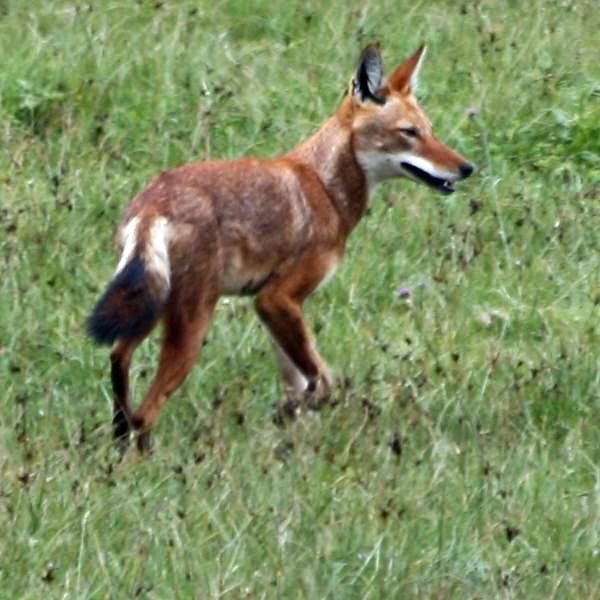 | ||
Ethiopia has a large variety of indigenous plant and animal species. In some areas, the mountains are covered with shrubs such as pyracantha, jasmine, poinsettia, and a varied assortment of evergreens. Caraway, carcade, cardamom, chat, coriander, incense, myrrh, and red pepper are common. The lakes in the Great Rift Valley region abound with numerous species of birds, and wild animals are found in every region. Among the latter are the Sudan cheetah, Masai lion, civet, serval, African bush elephant, bushpig, gazelle, antelope, ibex, kudu, dik-dik, oribi, reedbuck, Somali wild ass, Grévy's zebra, hyena, baboon, and numerous species of monkey. As of 2002, there were at least 277 species of mammals, 262 species of birds, and over 6,600 species of plants throughout the country.
Contents
Reptiles
Need data inserted
Threatened species
Historically, throughout the African continent, wildlife populations have been rapidly declining owing to logging, civil wars, hunting, pollution, poaching and other human interference. A 17-year-long civil war along with severe drought, negatively impacted Ethiopia's environmental conditions leading to even greater habitat degradation. Habitat destruction is a factor that leads to endangerment. When changes to a habitat occur rapidly, animals do not have time to adjust. Human impact threatens many species, with greater threats expected as a result of climate change induced by greenhouse gas emissions.
Ethiopia has a large number of species listed as critically endangered, endangered and vulnerable by the IUCN. To assess the current situation in Ethiopia, it is critical that the threatened species in this region are identified.
There are 31 endemic species of mammals, meaning that a species occurs naturally only in a certain area, in this case Ethiopia. The African wild dog prehistorically had widespread distribution in Ethiopia; however, with last sightings at Fincha, this canid is thought to be potentially extirpated within Ethiopia. The Ethiopian wolf is perhaps the most researched of all the endangered species within Ethiopia. This, however, is likely not the case as a breeding pack has been seen, and photographed by Bale Mountain Lodge guests inside the park's Harenna Forest in 2015.
Several conservation programs are in effect to help endangered species in Ethiopia. A group was created in 1966 called The Ethiopian Wildlife and Natural History Society, which focuses on studying and promoting the natural environments of Ethiopia along with spreading the knowledge they acquire, and supporting legislation to protect environmental resources.
There are multiple conservation organizations one can access online, one of which connects directly to the Ethiopian wolf. Funding supports the World Wildlife Fund’s global conservation efforts. The majority of the funds received (83%) goes towards conservation activities, while only 6% goes towards finance and administration. The remaining 11% of funds are allocated for fundraising, which is much needed. The WWF Chairman of the Board, Bruce Babbitt holds this organization accountable for the best practices in accountability, governance and transparency throughout all tiers within the organization.
A critical way to help threatened animals survive would be to protect their habitat permanently through national parks, wilderness areas and nature reserves. By protecting the places where animals live, human interference is limited. Protecting farms, and any place along roadsides that harbor animals helps encourage protection.
Flora
There are many types of vegetation, flowers, and plants in Ethiopia. There are many cactus plants that grow in Ethiopian high lands. Ethiopia has many species of flowers that are used for medication and decoration. Many of the plants are used to make honey and oil. Moreover, many of the floras in Ethiopia can be used flavoring or spice. Ethiopia has different climate and geological zones that provide different types floras. There are different alpines and evergreen floras. There are some plants that Ethiopia exports to other countries like coffee and Kat which is significant to their economy.
